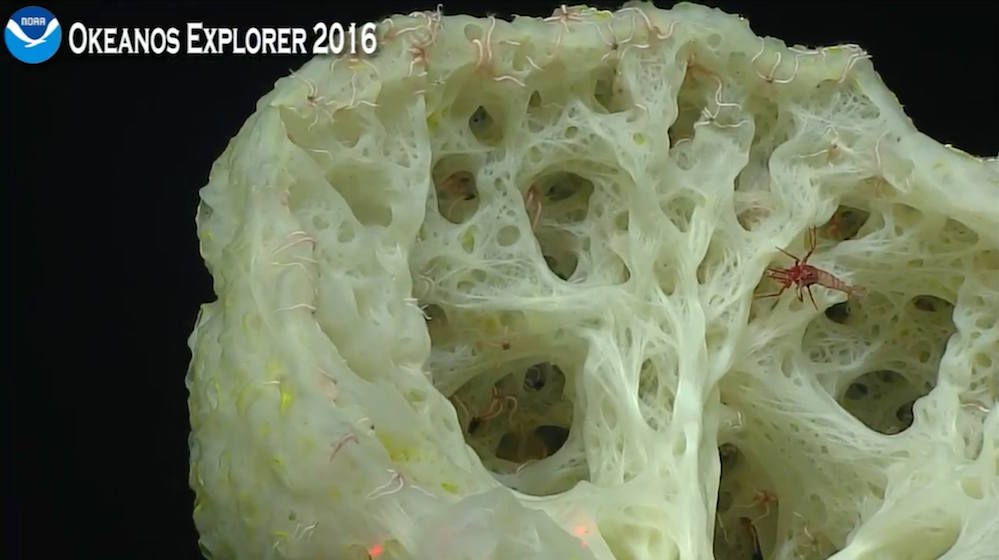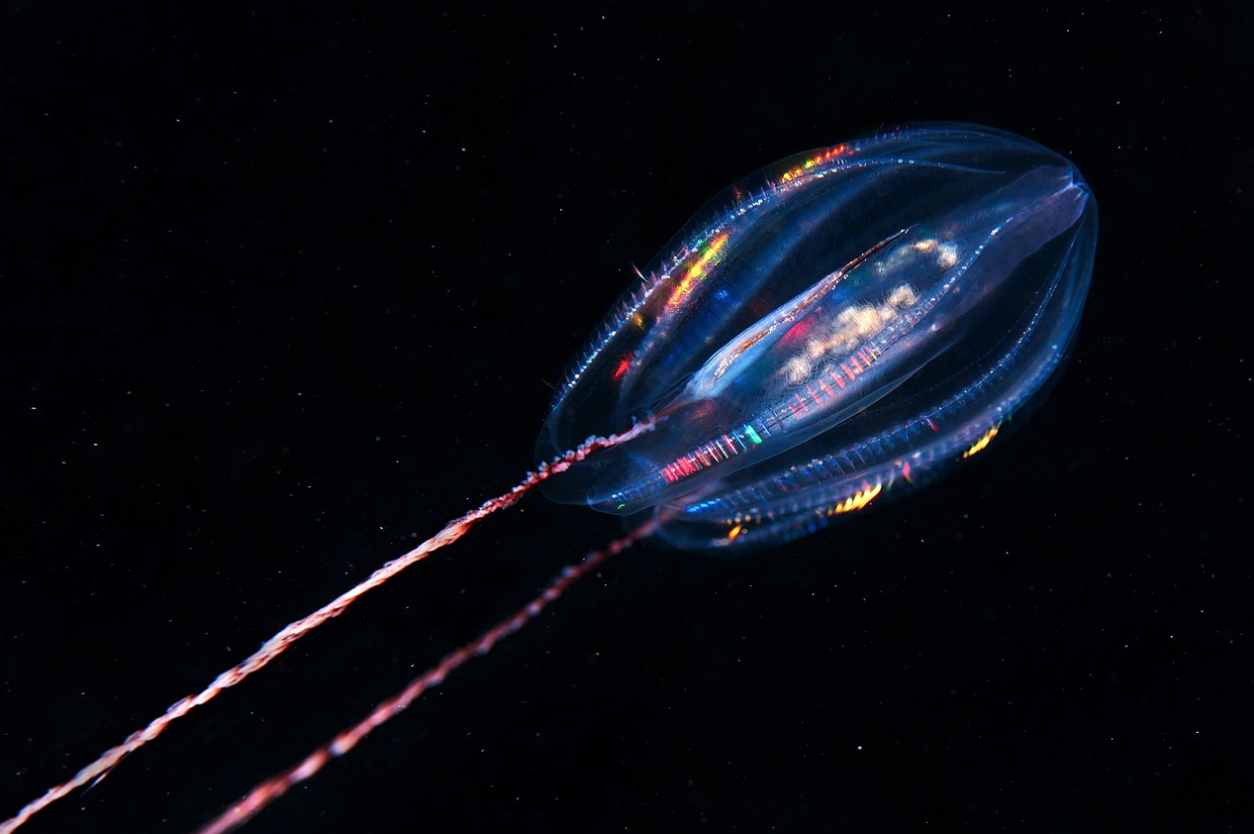A team of researchers has determined that comb jellies, Ctenophores, were the first animals on earth, existing 700 million years ago, and pre-dating sponges by 100 million years. They are also the most recent common ancestor of all animals, (including ourselves,) and can still be found in the oceans today. This may lead to a better understanding of how all animals evolved.
Scientists had narrowed the earliest animals down to two groups – ctenophores and sponges, Comb jellies differ from true jellyfish in that they propel themselves with eight rows of cilia, whereas Jellyfish propel themselves by squirting water. In an evolutionary timeline, Ctenophores appeared first, then sponges, then worms, at 500m years, with the first vertebrates appearing 450 million years ago. The dinosaurs appeared 230m years ago. Despite the discovery, there is no fossil record for Ctenophores as their soft bodies were not preserved. The links were made instead using living Ctenophores and by comparing their genomes.

Animal ancestors
‘Traditionally, sponges have been widely considered to be the earliest surviving branch of the animal tree, because sponges don’t have a nervous system, they don’t have muscles, and they look a little bit like colonial versions of some unicellular protozoans,’ Said, Daniel S. Rokhsar from the Department of Molecular and Cell Biology, University of California, Berkeley.
‘And so, it was a nice story: First came the unicellular protozoans, and then sponge-like multicellular consortia of such cells evolved and became the ancestor of all of today’s animal diversity. In this scenario, the sponge lineage preserves many features of the animal ancestor on the branch leading to all other animals, including us.’
‘Specializations evolved that led to neurons, nerves and muscles and guts, and all those things that we know and love as the defining features of the rest of animal life. Sponges appear to be primitive since they lack those features.’
‘At first, we couldn’t tell if ctenophore chromosomes were different from those of other animals simply because they’d just changed a lot over hundreds of millions of years,’ said Rokhsar.
‘Alternatively, they could be different because they branched off first before all other animal lineages appeared. We needed to figure it out.’
‘We found a handful of rearrangements shared by sponges and non-ctenophore animals. In contrast, ctenophores resembled non-animals. The simplest explanation is that ctenophores branched off before the rearrangements occurred.’
More info
For more information see Schultz, D.T., Haddock, S.H.D., Bredeson, J.V. et al. Ancient gene linkages support ctenophores as sister to other animals. Nature (2023). https://doi.org/10.1038/s41586-023-05936-6
Image credit <a href="http://Alexander Semenov, CC BY-SA 4.0 Alexander Semenov



